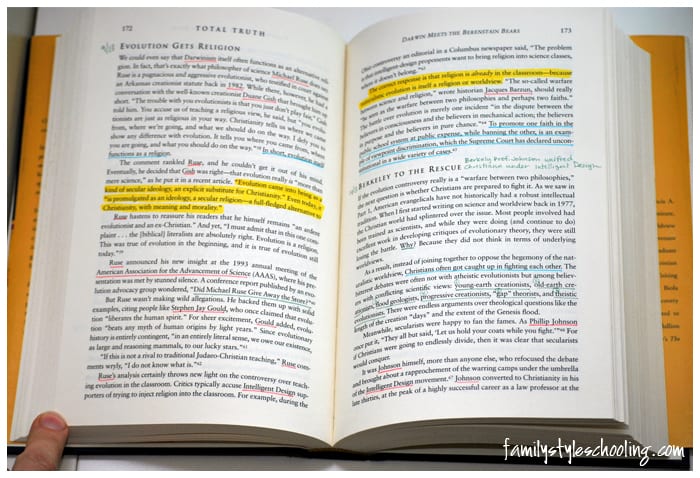Highlighting Method for Non-Fiction
Last week I introduced you to the highlighting method that changed how I think when I read a book. The great news is that it works for non-fiction as well. While the colors are generally the same for both, I approach non-fiction a little differently. Caution - you have to own the book before you mark it up!
1. Look over the Chapter. Quickly flip through the chapter; count and number the sections. Note the charts and graphs. This allows your brain to rest while you read, and disables the distracting message: "How much longer is this going to take?" When I get to the section 4/8, I know that I'm half way through! I use a neutral color for these markings - like gray or brown.
2. Pink is for terms. Green is for lists. Blue is for interesting or important. The markings are so helpful for summarizing, outlining, or discussing a text. When you can look back over your book and remember what you were thinking as you read, you have a tool ready for discussion at any time.
3. Enhance the Formatting. Some texts can be hard to read, especially if they are old and the formatting doesn't appeal to the modern reader. Add a little color and soon it will be simple to spot the important aspects of the material you are trying to learn. This will also aid in quickly referencing important features of previous chapters.
4. Allow your system to be flexible. Sometimes I run across a book that has so many important and interesting facts that I feel like I want to underline everything! That would defeat the purpose. In cases like that, I add an additional color like yellow for the best of the best.
This system is so versatile and effective that I can prepare in the summer for subjects I am weak in so that I can lead from a place of rest. Try this approach on a short essay like the Lost Tools of Learning by Dorthy Sayers and see how it works. It will take some trial and error, but the effort is worth it!
Betsy Strauss is an unexpected homeschooler, mother of three, who is in a relationship with a sweet man for life. She loves reading books, drinking coffee, and learning anything with her kids.







This has been so helpful! Thanks!
These are great tips! Thanks for including photo examples(very helpful). I’m going to practice it with my Latin and Logic before Community Day #1.
Hi Betsy,
I loved all of the things that you learned about God in Math and the other strands. Do you happen to have a list of them from the year? I am directing Challenge B this year and would love to have extra things we may not have thought of to share with my class. Thank you for all of the wonderful things you share it it such a blessing a we love Latin with Andy!
That would have been a wonderful thing for me to collect…maybe in my common place book, but alas I didn’t write them all down. I am newly directing Challenge II this year, and I feel that loss of the beautiful things I don’t even know to look for, but I know that God’s grace is sufficient in my limitations. I’m sure he will lead your class to your own beautiful discoveries! Blessings on your year!